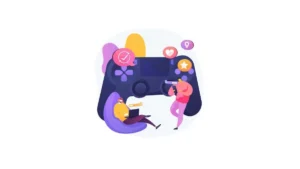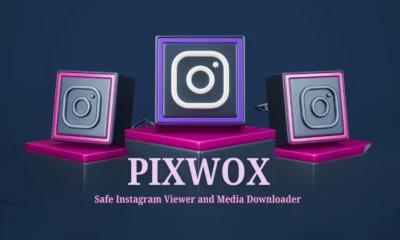GAMES
Ragdoll Hit: Wild Battles, Crazy Physics, Endless Laughs!

Ragdoll Hit isn’t just another fighting game. It’s a full-on chaos simulator. The moment you throw a punch, your character wobbles like jelly, making every battle unpredictable. No stiff animations—just wild physics at play. And that’s the beauty of it. You never know what’s coming next. A missed kick can send you flying. A mistimed dodge? Could be the funniest thing ever. Casual players love the humor. Competitive ones, the strategy. It’s a game that anyone can jump into, but few can master. And that’s what makes Ragdoll Hit stand out. Fast, ridiculous, and insanely addictive. Ready to experience the madness? Let’s dive into everything that makes this game a must-play!
What Is Ragdoll Hit?
Imagine stepping into a fight where nobody really knows how to fight. That’s Ragdoll Hit. It’s an action-packed, physics-based brawler where you control a character that flops, stumbles, and smashes through battles in the most unpredictable way. Every move you make is affected by the game’s hilarious ragdoll physics. You attack, but your limbs don’t always cooperate. Dodge? You might end up rolling off the stage instead. But that’s where the fun is. It’s not just about winning—it’s about how crazy the journey gets. Unlike traditional fighting games with precise movements, Ragdoll Hit thrives on chaos. Whether you’re playing solo or with friends, every match guarantees laughter, surprises, and pure entertainment.
How Ragdoll Physics Work in the Game
Physics in Ragdoll Hit are both your greatest weapon and worst enemy. Soft-body mechanics control every movement, making your character move like a noodle. You punch, but your arm swings wildly. Jump, and you might land face-first. That unpredictability is what makes the game hilarious. Every hit, every fall—it’s all unscripted, leading to moments you couldn’t plan if you tried. Unlike games with rigid animations, Ragdoll Hit ensures no two battles feel the same. You have to adapt, improvise, and sometimes just accept that gravity isn’t your friend. Mastering the physics isn’t about perfect timing—it’s about embracing the madness. And honestly? That’s what makes it so addicting.
Game Modes & Play Styles
Ragdoll Hit doesn’t just throw you into random fights. It gives you choices. Want a chaotic free-for-all? There’s a mode for that. Prefer teaming up with friends? You got it. Survival mode? Last one standing wins. Multiplayer battles? Pure mayhem. Each mode adds a different twist to the ragdoll combat. In some, strategy matters. In others, luck takes over. But in every mode, physics play the main role. No two fights feel the same. You can plan your moves, but the game has other ideas. That unpredictability is why players keep coming back. There’s always a new way to experience the madness of Ragdoll Hit.
Weapons & Combat Mechanics
Weapons in Ragdoll Hit turn every fight into a ridiculous spectacle. Swords, bats, frying pans—you name it, you can swing it. But because of the physics, wielding weapons isn’t so easy. A well-aimed hit could send your opponent flying. Or you could completely miss and fall over yourself. It’s all part of the fun. The game also lets you use the environment—tables, crates, even walls—to your advantage. Mastering combat isn’t about memorizing combos. It’s about reacting to the chaos. One second, you’re in control. The next? You’re tumbling across the screen. That’s Ragdoll Hit for you—messy, unpredictable, and absolutely hilarious.
Levels & Arenas: The Chaos Unleashed
Arenas in Ragdoll Hit aren’t just backgrounds. They’re part of the fight. Slippery floors, moving platforms, deadly traps—every stage has something that can ruin (or save) your game. One moment you’re dodging attacks, the next you’re falling into a pit. Some arenas are straightforward, letting players focus on combat. Others? Pure madness. Spinning obstacles, destructible walls, random hazards—they force you to adapt. The arena itself is sometimes a bigger threat than your opponents. And that’s what makes each match exciting. You never know what’s coming next. In Ragdoll Hit, survival isn’t just about fighting. It’s about outlasting the stage itself.
Character Customization & Unlockables
Your fighter in Ragdoll Hit isn’t just another floppy warrior. You can customize them. Skins, outfits, accessories—there’s plenty to unlock. Want to fight as a knight? A ninja? A guy in a banana suit? The game has options. Some skins are cosmetic, others add little twists to gameplay. You can unlock them by playing matches, completing challenges, or just causing enough mayhem. The more you play, the wilder your fighter looks. And in a game where physics decide everything, looking ridiculous is part of the fun. After all, if you’re gonna flop around, might as well do it in style.
Strategies & Tips for Winning Battles
Winning in Ragdoll Hit isn’t about speed or reflexes. It’s about adapting to chaos. First rule? Stay on your feet. Second? Use the environment—walls, ledges, even opponents—to your advantage. Third? Expect the unexpected. No move is guaranteed to work. A perfect strike could miss. A mistimed jump might win you the match. Weapons help, but physics rule everything. The best players aren’t just skilled—they’re creative. They experiment. They use every little detail to stay ahead. And they never take the game too seriously. In Ragdoll Hit, the smartest fighter isn’t always the strongest. It’s the one who can outlast the madness.
Multiplayer & Online Experience
Multiplayer in Ragdoll Hit is where the real fun begins. Playing against AI is great, but fighting real players? Pure insanity. Matches can go from controlled brawls to full-on chaos in seconds. The online experience is smooth, with matchmaking that keeps things balanced. Whether you’re battling strangers or friends, every fight feels unique. And thanks to the game’s physics, even the best players can have ridiculous moments. No one is safe from the madness. The community is active, with players sharing hilarious clips and moments online. If you think single-player is fun, wait until you try Ragdoll Hit with others.

Why Ragdoll Hit Is So Addictive
What makes Ragdoll Hit so hard to put down? It’s the unpredictability. No two matches are the same. One second, you’re dominating. The next, you’re sent flying. The physics create moments you can’t plan, making every fight feel fresh. And the humor? Top-notch. It’s hard not to laugh when your character flops around after a simple misstep. That mix of randomness, skill, and comedy keeps players coming back. Whether you win or lose, you always walk away entertained. And that’s the mark of a great game. Ragdoll Hit doesn’t just challenge you—it makes every moment worth remembering.
Conclusion
Ragdoll Hit isn’t about precision. It’s about fun. It’s a game where anything can happen, where fights turn into chaotic, hilarious messes. Whether you play alone or with friends, every match is an experience. The unpredictable physics, wild arenas, and ridiculous combat make it a must-play for anyone who loves action-packed, over-the-top gameplay. There’s no right way to play—only the fun of figuring it all out as you go. If you’re looking for a game that’s equal parts skill and comedy, Ragdoll Hit is exactly what you need. Jump in, fight, fall, laugh—repeat. That’s the Ragdoll Hit way.

-

 BIOGRAPHY7 months ago
BIOGRAPHY7 months agoBehind the Scenes with Sandra Orlow: An Exclusive Interview
-

 HOME1 year ago
HOME1 year agoDiscovering Insights: A Deep Dive into the //vital-mag.net blog
-

 HOME1 year ago
HOME1 year agoSifangds in Action: Real-Life Applications and Success Stories
-

 BIOGRAPHY1 year ago
BIOGRAPHY1 year agoThe Woman Behind the Comedian: Meet Andrew Santino Wife



























